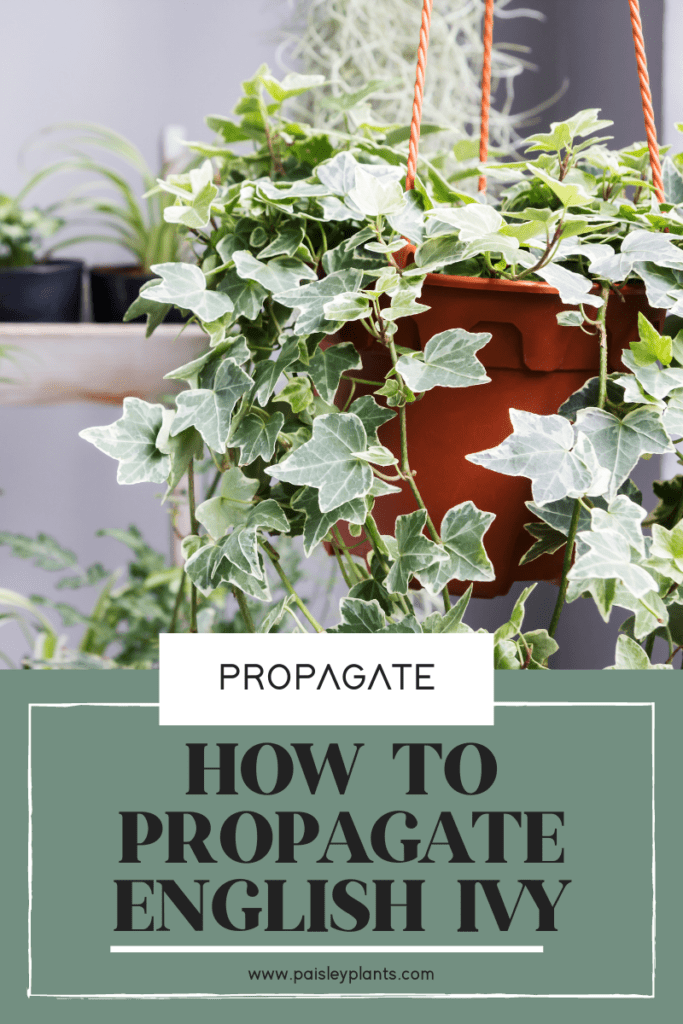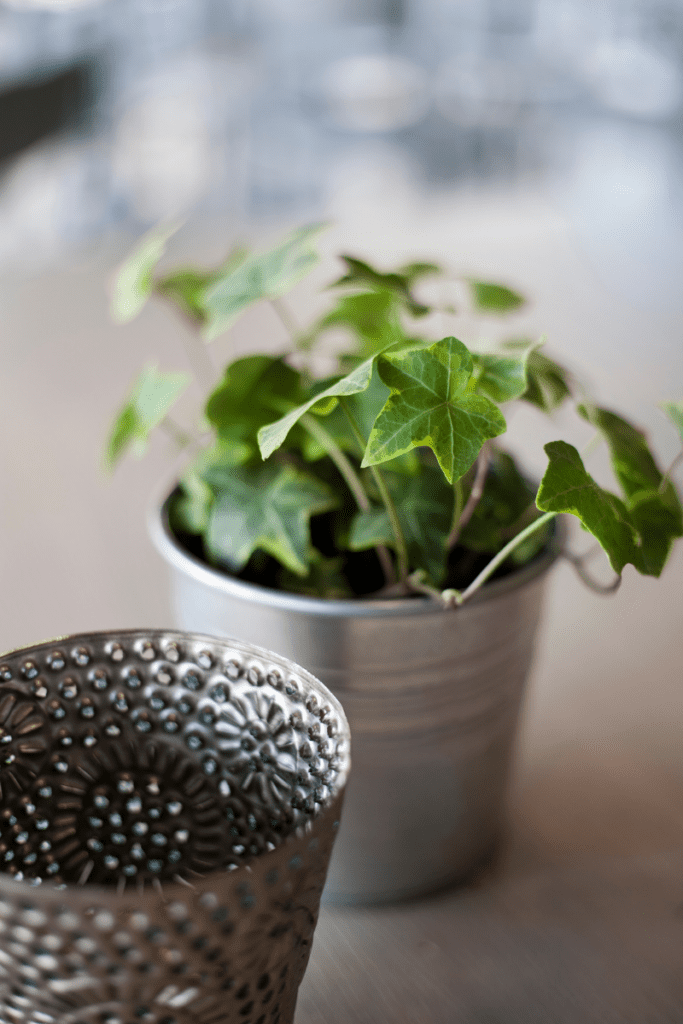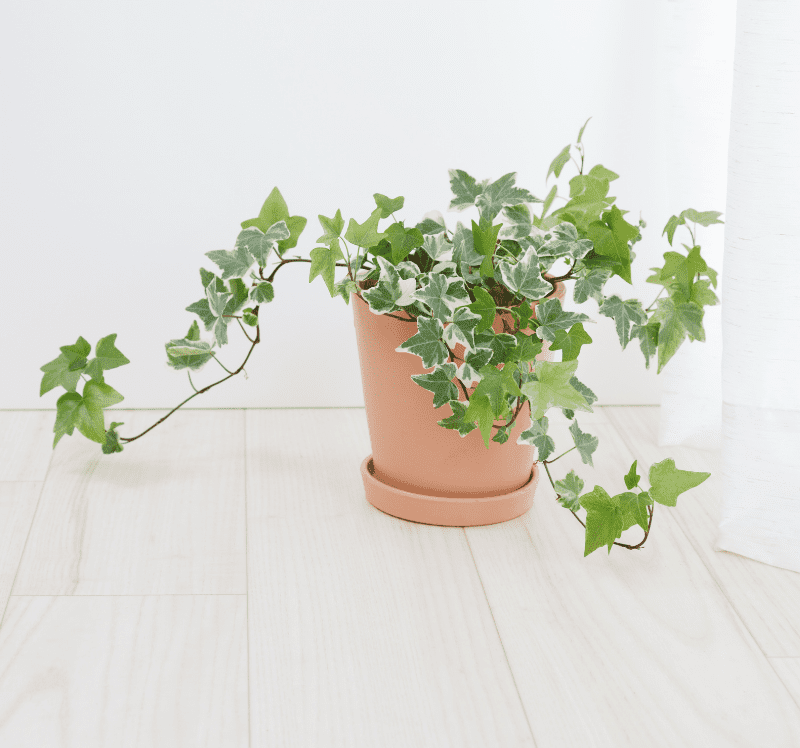English ivy plants are a beautiful, classic plant, both as indoor plants and outdoor plants. And the best part about owning English ivy is how easy it is to propagate it.
With these easy and straightforward steps, you too can propagate your own English ivy plant to produce many new plants. time and time again. We’ll go over two simple methods of propagation as well as a complete guide on how to properly care for your plant.

Table of Contents
English Ivy History and Background
Hedera Helix is known by many names; English ivy, common ivy, and European ivy. They’re native plants to regions of Scandinavia and Russia.
Common ivy has become one of the most identifiable plants and has built a reputation as a household name even the most nubile of gardeners are familiar with.
English ivy has been with humankind for millennia, as even the ancient Greeks and Roman revered ivy to be sacred to the god Dionysus/Bacchus. In today’s times, ivy is often used as a ground cover due to their fast-growing nature. While it is common to see ivy grown outdoors, it can also be cultivated for use as a houseplant.
Common ivy is a perennial evergreen, and can also be classified as a woody vine. They are identifiable by their pear shaped leaf shape and their dark green, glossy color. There is no maximum size for common ivy; it grows as far as it can stretch.

When grown as an outdoor plant, you need to be extremely careful as this plant is an invasive plant. It can spread incredibly easy and be harmful for trees and other plants. It’s best to keep this plant contained in a hanging basket or pot to prevent it from spreading.
If you own pets or have small children, do be very cautious; consumption of English ivy is toxic to both humans and animals.
However, English Ivy is great at cleaning the air of toxins like benzene, formaldehyde, xylene and toluene. Find other air purifying plants here!
Is English Ivy Hard to Propagate?
Propagating English ivy is not difficult at all! In fact, it is one of the easiest plants to propagate using stem cuttings. In the next section, let’s take a look at the two most popular methods of propagating English ivy: water and soil propagation.
How to Propagate an English Ivy
For best results, the best time of year to propagate your indoor ivy during their growing season. You can propagate all year round but you’ll have the best chance at success during the spring and summer months.
Tools Needed:
Here’s what you need:
- an English Ivy plant (of course!)
- a pair of scissors or sharp knife
- For water propagation: a jar of water or propagation station
- For soil propagation: a pot with fresh soil
How to Prepare Your Cuttings
Both water and soil propagation involve taking clippings from your English ivy plant and growing roots from the stems. First and foremost, you’ll want to collect your stems and prepare them to be propagated.
Using a sharp knife or scissors, take a few healthy clippings from your parent plant. Be sure that your clippings have a few nodes (bumps on the outside of the stem). That is where the roots will form. These clippings should be 4 to 5 inches in length.
Water Propagation
Water propagation entails rooting your English ivy stems in a glass of water or propagation station. Follow these steps to successfully propagate your ivy via water.
Steps:
- Place your ivy stems in your propagation station. The water should be able to cover the bottom of the stems. Do not allow the leaves to get wet, as this can reduce the chance of propagation. Let your leaves sit above the rim of the glass to allow for air circulation.
- Place the jar in a location of your home that receives bright light.
- It takes a few weeks for English Ivy roots to form from the stems. Wait until these roots grow to at least one inch before transplanting them into a pot.
Water Propagation Pros:
This method makes monitoring your ivy stems easier during the propagation process. By placing your stems in a glass of water, you can easily check to see if your stems are rooting or not.
Water Propagation Cons:
English ivy that has been propagated with water can be tricky to transplant and has a lower chance of surviving than a cutting that is propagated in soil.
Soil Propagation
Soil propagation is similar to water propagation. However, you’ll be immediately burying your stems in soil, rather than in water.
Steps:
- Dip your English Ivy cuttings in hormone rooting powder. This can be found either online or at a garden nursery. Rooting hormone powder is extremely helpful in increasing your cuttings’ rate of survival.
- Place the cut end of your ivy stems in a plant pot filled with a sand/soil mixture. Make sure the leaves of the cutting are above the soil to promote air circulation.
- Water the soil very well and place a plastic bag over the pot to help retain soil moisture.
- It takes anywhere between six to eight weeks for the ivy plant to root in the soil.
- One of the earliest indicators of rooting will be new growth sprouting from the stems.
Soil Propagation Pros:
This is a very straightforward method of propagating. After the ivy roots, you can continue to grow it in the same pot you propagated it in. Unlike water propagating, you don’t have to risk transplant shock from moving your stem from water to soil.
Soil Propagation Cons:
It takes up to eight weeks for the stems of the ivy plant to root, which is a fairy long time for propagating. You’ll have to wait two months to see if the propagation was a success, whereas you can just monitor the progress with water propagation. Which is why it is a good idea to propagate several stems at the same time.
Care After Propagation

Sun & Light
English ivy can grow in a variety of lighting conditions ranging between partial shade to full sunlight. When grown indoors, it is best to grow English ivy in a location that receives bright, indirect light. Your plant will not do well in full shade or direct sunlight 100% of the time. Too much sun can burn your plants leaves.
Water
Always carefully monitor your ivy’s soil before rehydrating your plants. Since these evergreen vines enjoys being a little dry, wait until the top layer of soil has dried up before watering your plant. English ivy (whether grown indoors or outdoors) enjoys a moist soil, not a soaking wet one.
English Ivy are typically a very hardy plant but the one way you can kill them is through overwatering. Too much water can cause root rot, especially on new roots.
Soil Type
While the English ivy is forgiving of poorer soils, their ideal soil type is a loamy, slightly alkaline soil. Make sure that the soil you plant your ivy in is well-draining, as ivy prefers to be a little drier.
You can plant your English ivy in a standard potting mix as long as it has the appropriate drainage and is loose in texture.
Fertilizer
English ivy should be fed during their active growing season )spring and summer). Feed your plant with a balanced fertilizer with an NPK ratio of 20-20-20. This fertilizer should be applied every two weeks.
However, do not feed your common ivy when it is experiencing moments of extreme stress. Examples of such stress include high heat, low temperatures, dry soil, or when leaf production has ceased.
Temperature & Humidity
English ivy enjoys a range of temperatures that stem between 70° and 90° F, which is more than attainable for household temperatures. Common ivy does not enjoy extremely cold temperatures, so do avoid placing your plant in locations of the house such as near an air conditioning vent or a drafty window.
In addition to temperature, humidity plays a role in maintaining the deep green hue of the English Ivy’s leaves. Common ivy enjoys medium to high humidity. They are tolerant of normal household humidity levels, though investing in an electric humidifier is an excellent way to add extra humidity if you worry your house air is a little too dry.
Choosing a Pot
The most important aspect of housing English ivy in a pot is good drainage. As we’ve discussed previously, English ivy strongly prefers well-draining, drier soil conditions.
Please ensure that the pot you house your ivy in has ample drainage holes to allow excess moisture to pass through and keep the soil comfortably moist. Don’t be too concerned about a pot that’s huge as these plants don’t have a very extensive root system .
Pruning
As we all know, English ivy has a reputation for loving to spread out and being a fast grower. By pruning your common ivy, you can help control its size to a more manageable amount.
Pruning your ivy is best done during the springtime, just as your plant enters its active growing period. Snip off the tips of the ivy to help contain it into a manageable bush shape.
FAQ
Yes! While English ivy has garnered a bad reputation for being a tricky houseplant, this is largely just a misunderstanding. When grown outdoors, English ivy grows wildly with nearly zero help. However, when grown inside, common ivy requires more attentive care, which is fairly typical of most houseplants.
Yes, but not all of the United States. English ivy is considered an invasive species to many regions of the United States. These regions include the Pacific Northwest, California, and parts of the Midwest and Southeast.
To be safe, make sure to contact your local agriculture authority to ensure you are not unintentionally planting an invasive species.
With some simple tips, propagating English ivy is a total breeze! With these easy methods, you can turn one English ivy plant into multiple to use as ground cover for your landscaping, or even just a beautiful houseplant that will be the envy of all your house guests.
Want another plant that’s easy to propagate? Check out the pothos plant or tips on how to propagate a spider plant!

